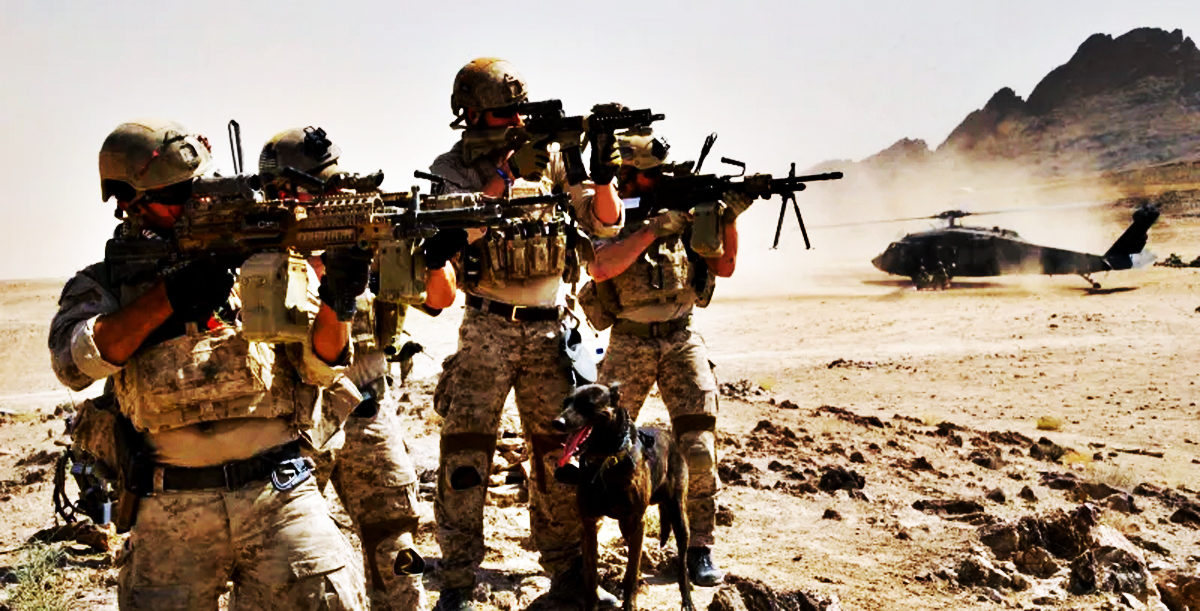
U.S. Navy SEAL Teams Are Born On January 1, 1962
U.S. Navy SEAL Teams Are Born On January 1, 1962: On this day in 1962 is the official date of the beginning of the United States Navy’s Sea, Air and Land Teams (SEAL) as President John Kennedy established the Navy’s Unconventional Warfare unit. SEAL teams are designed to conduct direct action missions from any environment.
Although the official date for the SEAL Teams is in 1962, they were actually tied to units in World War II that they owe their lineage to. Less than a year after Pearl Harbor, the Navy recognized the need for dedicated beach reconnaissance. The Amphibious Scout and Raider School was established at Little Creek, Virginia and contained both Navy and Army personnel. This first group of special operators also contained Phil Bucklew, who is considered the father of all Navy Special Operations.
And while most people think of the work that the Navy’s beach clearing operations in the Pacific, they also conducted operations in every major amphibious landing in the European theater. They were instrumental in leading the way for amphibious forces in North Africa, Sicily, Salerno, Anzio, Normandy on D-Day, and the landings in Southern France.
The Navy also developed Navy Combat Demolition Units (NCDU) which would blow gaps in beach defenses for amphibious forces to breach during invasions. NCDUs suffered a large number of casualties during D-Day. While in the Pacific they created Underwater Demolition Teams (UDT). The UDTs rewrote the manuals of the NCDUs and wore just swimming trunks (UDT shorts), fins, masks, and a combat knife. They, contrary to orders would get out of their boats to conduct their missions and thus became known as the “naked warriors”.
UDT swimmers conducted operations at Eniwetok, Saipan, Kwajalein, Tinian, Guam, Angaur, Ulithi, Peleliu, Leyte, Lingayen Gulf, Zambales, Iwo Jima, Okinawa, Labuan, and Brunei Bay. During the Korean War UDTs would perform operations all long the Korean coastlines and they targeted bridges, mines, and scouted out the landings at Inchon.
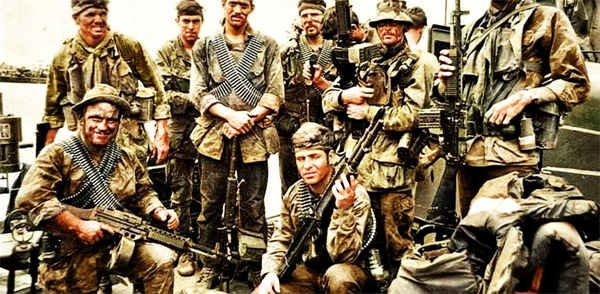
It should be noted that OSS (Office of Strategic Services) had its own Maritime Unit. And many of the missions we think of SEALs today were actually conducted by the special operations unit then. The OSS Maritime Unit conducted operations using newly improved fins, masks, SCUBA (self-contained, underwater breathing apparatus), the use of Swimmer Delivery Vehicles and conducted the first submarine lockout.
As the war in Vietnam was still in its infancy stage for the Americans, President Kennedy recognized what kind of a war it would eventually become. He helped get the U.S. Army Special Forces the recognition it needed to expand the Army’s Unconventional Warfare capabilities. He foresaw the same need for the U.S. Navy. While making the speech about putting a man on the moon, he spoke about spending $100 million dollars to strengthen the U.S. UW capability. However, while he was the one signing the SEAL Teams into existence, the Navy had already been working on expanding the role of UDTs for several years.
SEAL Teams One and Two deployed to Vietnam to operate in the deltas and thousands of rivers and canals in the country to try to effectively disrupt the enemy’s lines of communication.
SEALs advised and trained Vietnamese forces, such as the LDNN (Vietnamese SEALs) and conducted their own brand of UW. These Navy commandos also perfected the art of nighttime Direct Action missions such as ambushes and raids to capture prisoners of high intelligence value. These are considered the bread-and-butter of the SEAL forces today.
During the war, the intelligence gathering for the troops was generally poor, it was then that SEALs and Green Berets would begin gathering their own intelligence. It was then that the value of the intel gathered by these Special Operators rose up quickly. Both Army and Navy Special Operators would serve together along with CIA personnel in the Military Assistance Command, Vietnam Studies and Observation Group (MACVSOG).
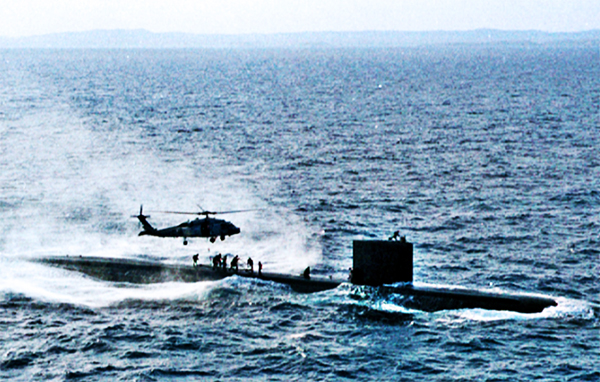
These men while representing less than 1 percent of the ground forces in Vietnam, produced about 75 percent of all the usable intelligence for the troops in the country.
After Vietnam, the SEAL Teams would expand during the buildup of Special Operations forces in the 1980s. SEALs would serve in the battles in Grenada, Panama, the first Persian Gulf war with Iran, Somalia, Afghanistan after 9/11, Iraq and in Syria. They’ve also been involved in more low-visibility operations in the Philippines, in the Horn of Africa and countless other third-world countries where Special Operations Troops generally work in the shadows.
But two of the missions that SEALs have conducted have become mainstream news items. One was conducted in April of 2009 when Somali pirates took over the U.S. ship the Maersk Alabama. The pirates had taken the Captain of the Alabama, Richard Phillips hostage and they were in a lifeboat being towed behind the USS Bainbridge. SEALs from DEVGRU were alerted and transported to the Navy ships in the Area. Then, in a tremendous feat of marksmanship while on the open seas, DEVGRU snipers took out the pirates, each with a headshot.
During the early morning hours of May 1, 2011, in the country of Pakistan that is where SEALs of DEVGRU (Naval Special Warfare Development Group) were alerted after CIA intelligence pinpointed the location of Osama bin Laden
In a combined operation with CIA assets on the ground in Abbottabad, Pakistan about 35 miles from Islamabad, Pakistan, DEVGRU SEALs infiltrated into the target area using specially designed “stealth” Blackhawk helicopters landed in the compound that bin Laden had been hiding in, with members of his family. They quickly moved thru the facility and killed bin Laden and brought out his body and several of his computers in a tremendous intelligence coup.
Since the initial Iraq War in Desert Storm and thru the on-going Global War on Terror (GWOT), over 80 SEALs have given their lives in the service of our country. Today, there are 10 SEAL Teams and a SEAL Delivery Vehicle Team deployed everywhere around the globe.
SOPREP Military Culture, Foreign Policy & Defense News / Wikipedia / Encyclopedia Britannica /
Navy Seals / History.com /
U.S. Navy SEAL Teams Are Born On January 1, 1962 (YouTube) 
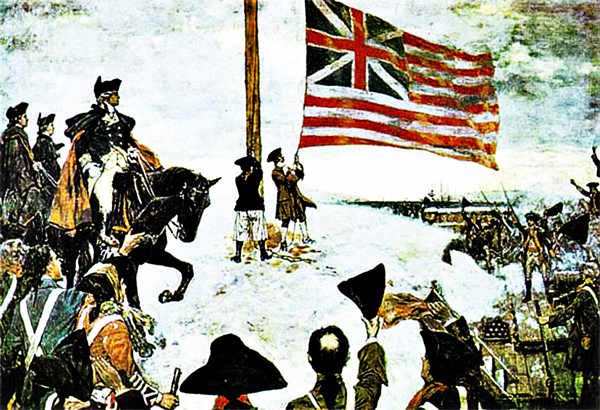
General George Washington hoists the first United States flag, the Grand Union Flag, at Prospect Hill on January 01, 1776
General George Washington hoists the first United States flag, the Grand Union Flag, at Prospect Hill: On January 01, 1776, the Continental Army was reorganized in accordance with a Congressional resolution which placed American forces under George Washington's control. On that New Year's Day the Continental Army was laying siege to Boston which had been taken over by the British Army. Washington ordered the Grand Union flag hoisted above his base at Prospect Hill “in compliment of the United Colonies”.
In Boston, on that New Year's Day, the Loyalists (supporters of Britain) had been circulating a recent King George speech, offering the Continental forces favorable terms if they laid down their arms.
These Loyalists were convinced that the King's speech had impressed the Continentals into surrendering - as a sign of the Continentals' “surrender”, the Loyalists mistook the flying of the Grand Union flag over Prospect Hill as a show of respect to King George.
In fact, however, the Continentals knew nothing of the speech until later. Washington wrote in a letter dated January 4:
“By this time, I presume, they begin to think it strange we have not made a formal surrender of our lines.”
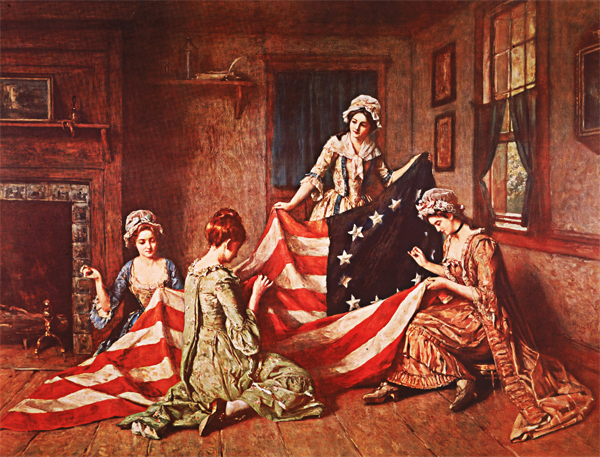
Obviously a new flag was needed.
According to Betsy Ross's dates and sequence of events, in May the Congressional Committee called upon her at her shop. She finished the flag either in late May or early June 1776. In July, the Declaration of Independence was read aloud for the first time at Independence Hall. Amid celebration, bells throughout the city tolled, heralding the birth of a new nation.
Much suffering and loss of life would result, however, before the United States would completely sever ties with Britain. Betsy Ross herself lost two husbands to the Revolutionary War. During the conflict the British appropriated her house to lodge soldiers. Through it all she managed to run her own upholstery business (which she continued operating for several decades after the war) and after the soldiers left, she wove cloth pouches which were used to hold gunpowder for the Continentals. (See The Story of Betsy Ross's Life for more information.)
(See “The Story of Betsy Ross's Life” for more information.)
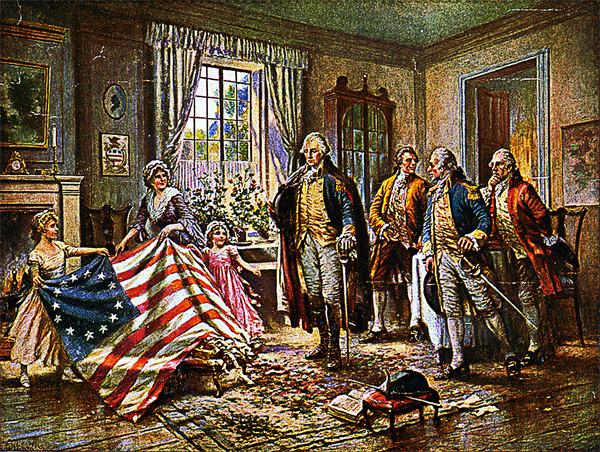
On June 14, 1777, the Continental Congress, seeking to promote national pride and unity, adopted the national flag.
“Resolved: that the flag of the United States be thirteen stripes, alternate red and white; that the union be thirteen stars, white in a blue field, representing a new constellation.”
United States History.org / Wikipedia / Encyclopedia Britannica / Encyclopedia Britannica /
Massachusetts Historical Society.org / North American Vexillological Association (NAVA).org / U.S. Government Information.gov / Mulder Media /
General George Washington hoists the first United States flag, the Grand Union Flag, at Prospect Hill on January 01, 1776 (YouTube) 
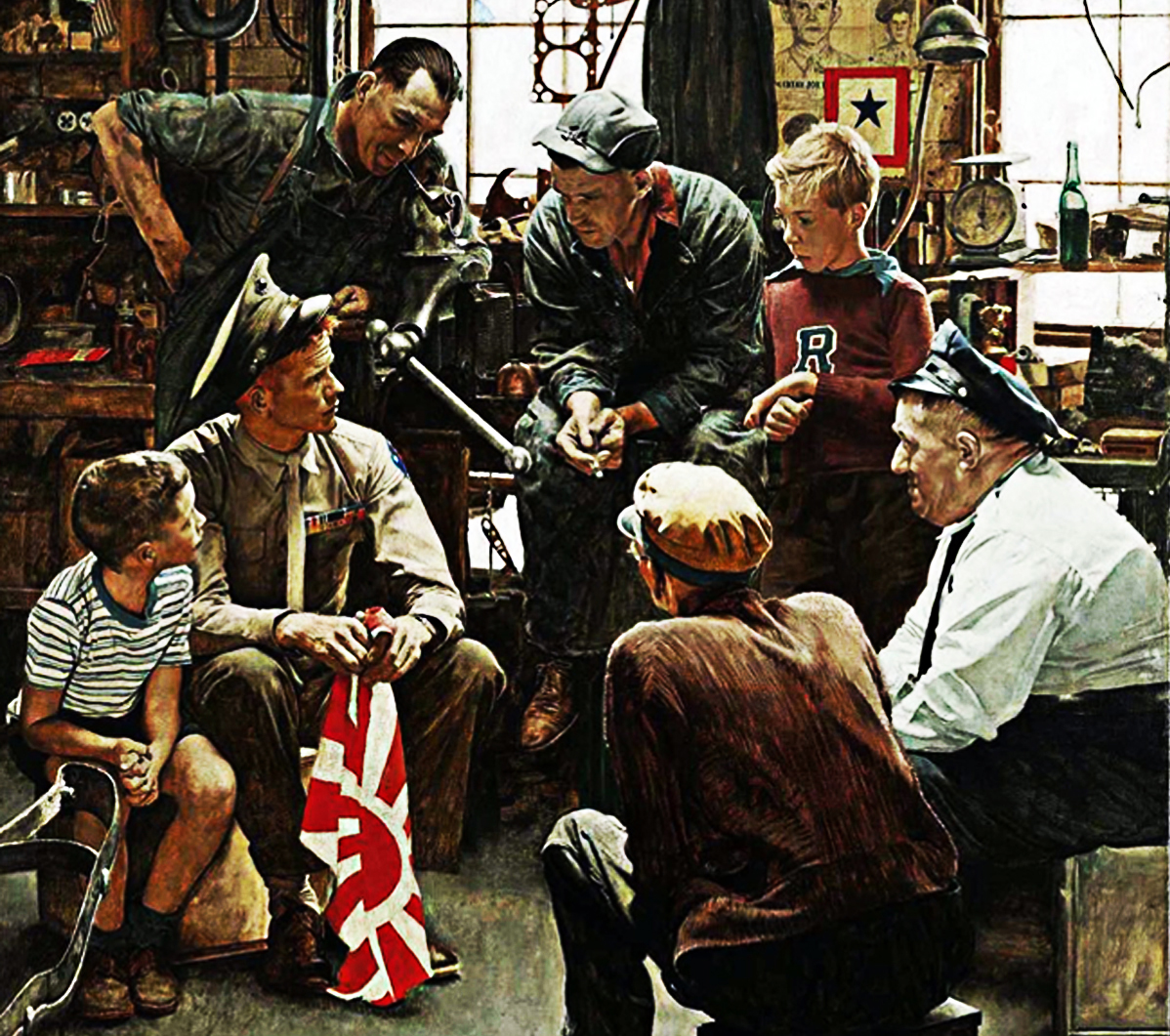
Understanding Military Terminology
Rescue Combat Air Patrol
(DOD) An aircraft patrol provided over that portion of an objective area in which recovery operations are being conducted for the purpose of intercepting and destroying hostile aircraft.
Also called RCRESCAPC.
See also Combat Air Patrol.
Joint Publications (JP 3-50) Personnel Recovery - Intelligence Resource Program
Rescue Coordination Center
(DOD) A unit, recognized by International Civil Aviation Organization, International Maritime Organization, or other cognizant international body, responsible for promoting efficient organization of search and rescue services and coordinating the conduct of search and rescue operations within a search and rescueregion.
Also called RCC.
Joint Publications (JP 4-10) Operational Contract Support
Rescue Coordination Center
(DOD) A unit, recognized by International Civil Aviation Organization, International Maritime Organization, or other cognizant international body, responsible for promoting efficient organization of search and rescue services and coordinating the conduct of search and rescue operations within a search and rescue region
Joint Publications (JP 3-50) Personnel Recovery - Intelligence Resource Program
Reserve
(DOD) 1. Portion of a body of troops that is kept to the rear, or withheld from action at the beginning of an engagement, in order to be available for a decisive movement.
2. Members of the uniformed Services who are not in active service but who are subject to call to active duty.
3. Portion of an appropriation or contract authorization held or set aside for future operations or contingencies and, in respect to which, administrative authorization to incur commitments or obligations has been withheld.
See also Operational Reserve.
Joint Publications (JP 4-05 Joint Mobilization Planning
Joint Publication - Department of Defense Dictionary of Military and Associated Terms
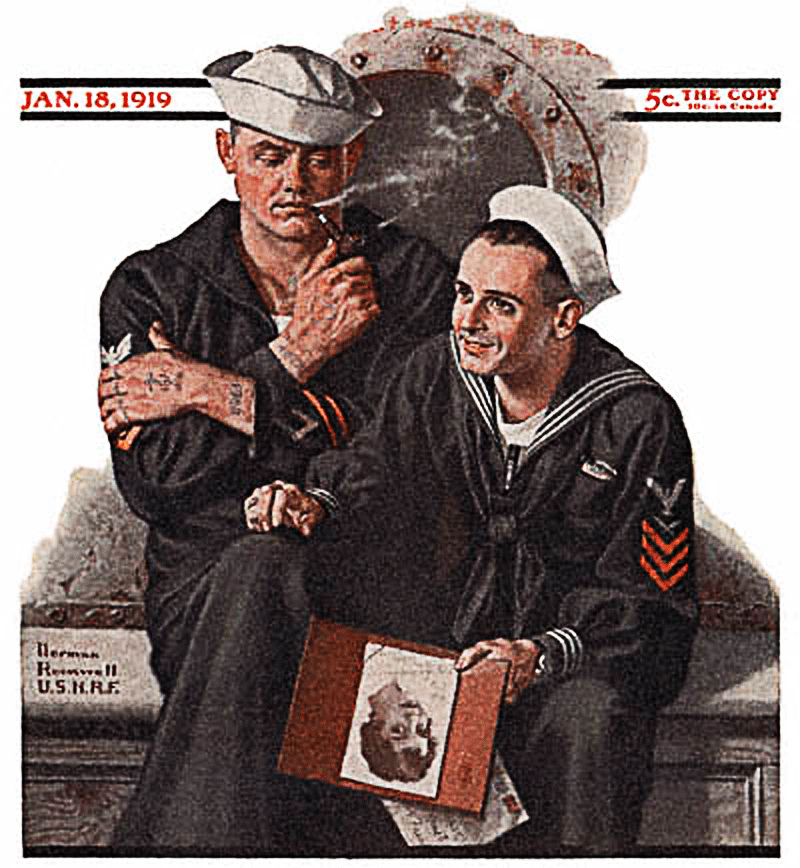
The Old Salt’s Corner
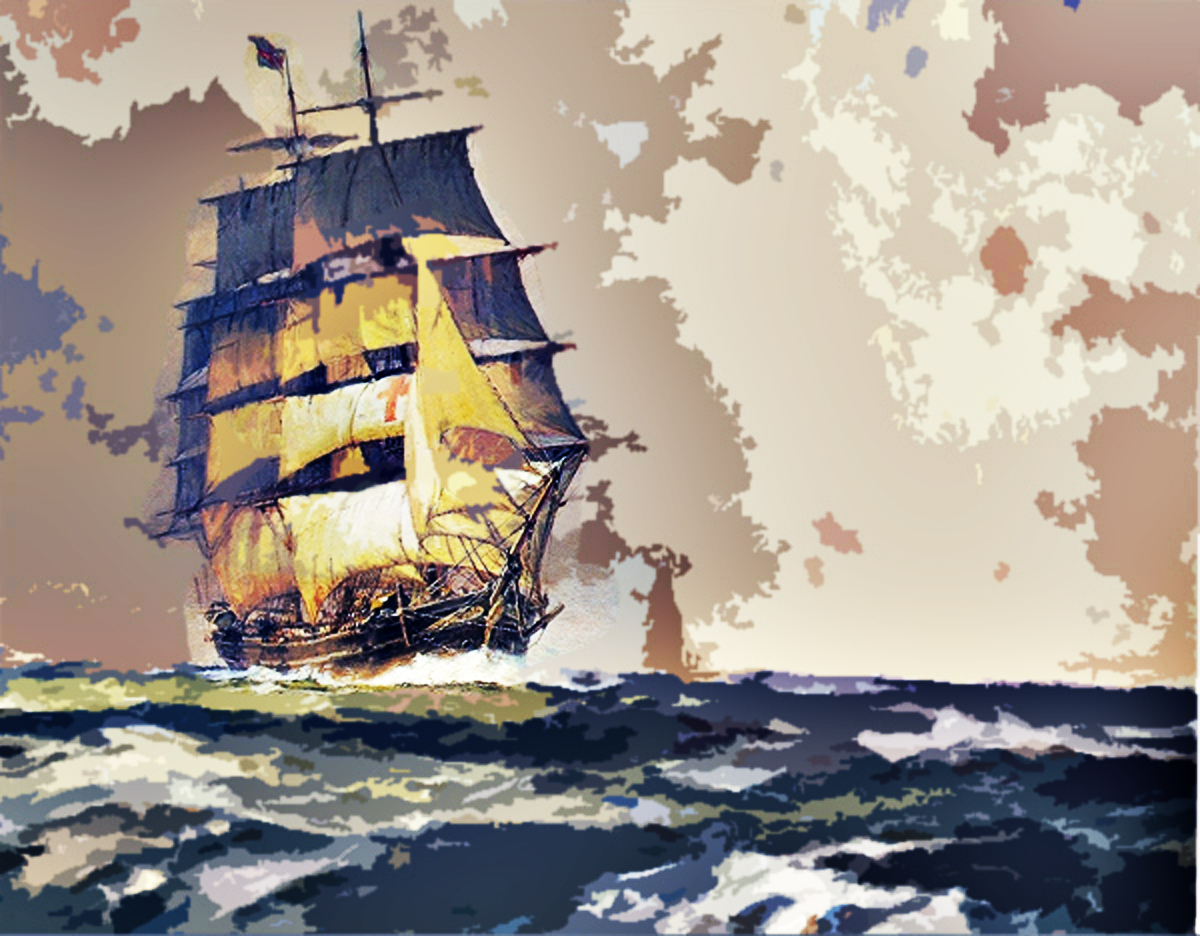
I must go down to the seas again, to the lonely sea and the sky,
And all I ask is a tall ship and a star to steer her by,
And the wheel's kick and the wind's song and the white sail's shaking,
And a gray mist on the sea's face, and a gray dawn breaking.
I must go down to the seas again, for the call of the running tide
Is a wild call and a clear call that may not be denied;
And all I ask is a windy day with the white clouds flying,
And the flung spray and the blown spume, and the sea-gulls crying..
I must go down to the seas again, to the vagrant gypsy life,
To the gull's way and the whale's way, where the wind's like a whetted knife;
And all I ask is a merry yarn from a laughing fellow-rover,
And quiet sleep and a sweet dream when the long trick's over.
~ John Masefield

“Thought for the Day”
“A man is what he thinks about all day long.”
“All I have seen teaches me to trust the creator for all I have not seen.”
“The greatest glory in living lies not in never falling,
but in rising every time we fall.”
“For every minute you remain angry,
You give up sixty seconds of peace of mind.”
“What lies behind you and what lies in front of you,
pales in comparison to what lies inside of you.”
“The greatest glory in living lies not in never falling,
but in rising every time we fall.”
“Though we travel the world over to find the beautiful,
we must carry it with us or we find it not.”
~ Ralph Waldo Emerson

Mr. Answer Man Please Tell Us: Why Does the New Year Start on January 1?
In many countries the New Year begins on January 1. However, this wasn’t always the case. In fact, for centuries, other dates marked the start of the calendar, including March 25 and December 25. So how did January 1 become New Year’s Day?
We can partly thank the Roman king Numa Pompilius. According to tradition, during his reign (c. 715–673 BCE) Numa revised the Roman republican calendar so that January replaced March as the first month.
It was a fitting choice, since January was named after Janus, the Roman god of all beginnings; March celebrated Mars, the god of war. (Some sources claim that Numa also created the month of January.)
However, there is evidence that January 1 was not made the official start of the Roman year until 153 BCE.
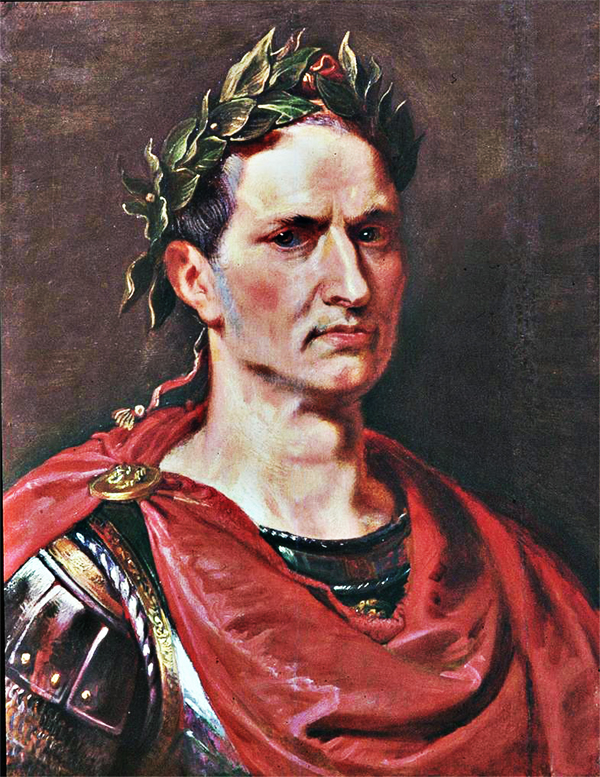
In 46 BCE Julius Caesar introduced more changes, though the Julian calendar, as it became known, retained January 1 as the year’s opening date. With the expansion of the Roman Empire, the use of the Julian calendar also spread.
However, following the fall of Rome in the 5th century CE, many Christian countries altered the calendar so that it was more reflective of their religion, and March 25 (the Feast of the Annunciation) and December 25 (Christmas) became common New Year’s Days.
It later became clear that the Julian calendar required additional changes due to a miscalculation concerning leap years. The cumulative effect of this error over the course of several centuries caused various events to take place in the wrong season.
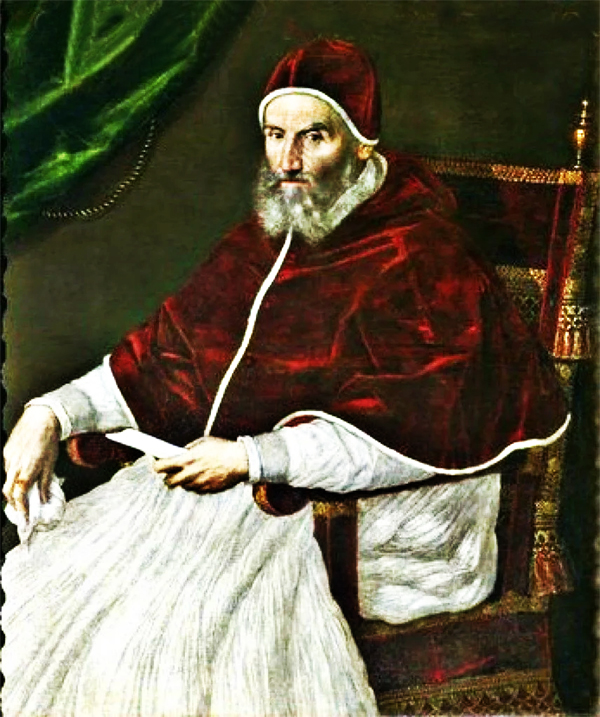
It also created problems when determining the date of Easter. Thus, introduced a revised calendar in 1582. In addition to solving the issue with leap years, the Gregorian calendar restored January 1 as the start of the New Year.
While Italy, France, and Spain were among the countries that immediately accepted the new calendar, Protestant and Orthodox nations were slow to adopt it.
Great Britain and its American colonies did not begin following the Gregorian calendar until 1752. Before then they celebrated New Year’s Day on March 25.
Over time non-Christian countries also began to use the Gregorian calendar. China (1912) is a notable example, though it continued to celebrate the Chinese New Year according to a lunar calendar.
In fact, many countries that follow the Gregorian calendar also have other traditional or religious calendars. Some nations never adopted the Gregorian calendar and thus start the year on dates other than January 1. Ethiopia, for example, celebrates its New Year (known as Enkutatash) in September.
Encyclopedia Britannica / Wikipedia / World History Encyclopedia.org /
Almanac / Connecticut State Library.org / History Channel / National Geographic /
Why Does the New Year Start on January 1? (YouTube) 

NAVSPEAK aka U.S. Navy Slang
XO: Executive Officer: The second-in-Command of a ship, aviation squadron or shore command, second in authority to the Commanding Officer.
XOI: Executive Officer's Inquiry: A step in the non-judicial punishment process in which the wayward sailor appears before the executive officer (XO). After hearing the details of the case, the XO may recommend dismissal or refer it to the Commanding Officer (CO) for “Mast”.
XO's Happy Hour: A daily, hour-long mandatory cleaning evolution. Usually introduced by XO on the 1MC.
X-Ray Fitting:
1. A hatch, scuttle or the like which in normal condition is closed both in-port and at-sea. (See material condition)
2. A room where contraband may be hidden or for sexual relations while at-sea. (See “Fan Room”)
3. Historically, where a chief petty officer would take subordinates to “make” them comply (using several punches to the face).
Xox (verb): To enter engineering log data suspiciously similar to the previous hour's log data. Derived from “xerox”.
Yardbird: A civilian shipyard worker.
YARFO: “You Ain't Reactor? Fuck Off.” This slogan was adopted by Reactor Departments on CVNs in response to the Aviation Ordnance slogan “IYAOYAS” (“If You Ain't Ordnance, You Ain't Shit” Pronounced “Eye-OH-Yahs”).
YGFBKM: “You've Got to Fucking Be Kidding Me!”
YGTBSM: “You've Got To Be Shitting Me!”
Wiktionary.org

Just for you MARINE
YATYAS or YAT YAS: You ain't tracks, You ain't shit, an amtrac slogan or term for AAV Marines.
Yellow Leg: Marine, nickname given by North Korean Army in reference to Korean War-era discolored, yellow-looking leggings.
You-who: When an NCO or Higher wants the attention of a Junior/Boot and does not know his name.
Yut or Yut Yut: Stands for “Yelling Unnecessarily Things”. A motivational saying similar to Oorah.
Wikipedia.org
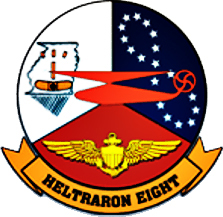
Naval Aviation Squadron Nicknames
HT-8 Helicopter Training (HT) Squadron EIGHT - nicknamed the “Eightballers”
United States Navy - Marine Corps Commander, Helicopter Training Air Wing FIVE - Naval Air Station Milton, Florida. / HTU-1: December 3, 1950-March 1957 / HTG-1: March 1957- July 1, 1960 / HT-8: July 1, 1960 – present
Wikipedia.org

Where Did That Saying Come From?
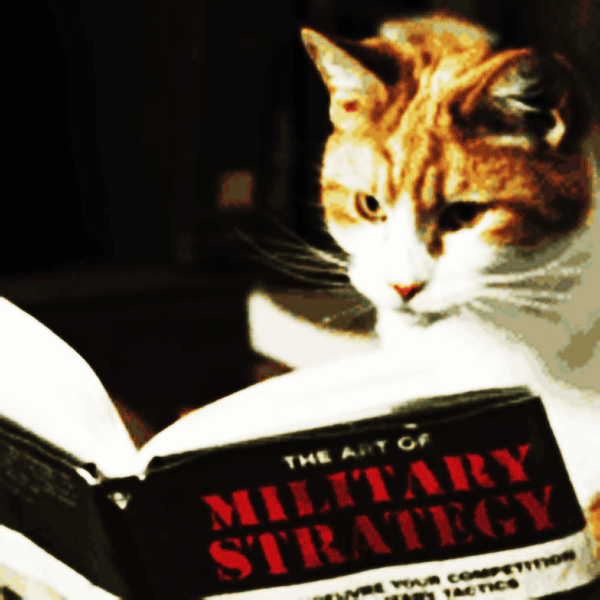
“A little knowledge is a dangerous thing:”
Meaning: The proverb “A little knowledge is a dangerous thing” expresses the idea that a small amount of knowledge can mislead people into thinking that they are more expert than they really are, which can lead to mistakes being made.
History: “A little knowledge is a dangerous thing” and “a little learning is a dangerous thing” have been used synonymously since the 18th century.
The “little learning” version is widely attributed to Alexander Pope (1688 - 1744). It is found in his An Essay on Criticism, 1709 and I can find no earlier example of the expression in print:
A little learning is a dangerous thing;
drink deep, or taste not the Pierian spring:
there shallow draughts intoxicate the brain,
and drinking largely sobers us again.
The similarity of the two phrases is demonstrated by what appears to be an impromptu coining of “a little knowledge is a dangerous thing” in a piece in The monthly miscellany; or Gentleman and Lady's Complete Magazine, Vol II, 1774, in which the writer misquoted Pope:
Mr. Pope says, very truly, “A little knowledge is a dangerous thing.”
Both Pope's original verse and the misquotation of it were pre-dated by a similar notion expressed by an anonymous author, signing himself “A B”, in the collection of letters published in 1698 as The Mystery of Phanaticism:
“Twas well observed by my Lord Bacon, That a little knowledge is apt to puff up, and make men giddy, but a greater share of it will set them right, and bring them to low and humble thoughts of themselves.”
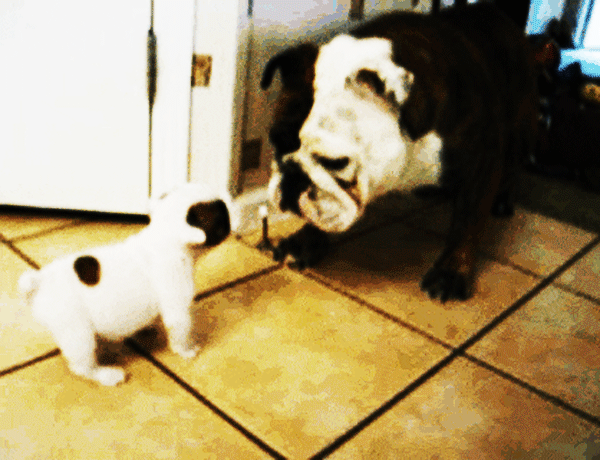
Again, there is a degree of misquotation here. “My Lord Bacon” was the English politician and philosopher Francis Bacon, Viscount St Alban, and what he actually said, in his The Essays: Of Atheism, 1601, was:
“A little philosophy inclineth man’s mind to atheism; but depth in philosophy bringeth men’s minds about to religion.”
So, who coined the phrase? It appears to have been a group effort. Bacon can be credited with the idea, Pope with the “learning” version and the mysterious “A B” with the “knowledge” version.
The number of writers who were stating variants of “a little learning is a dangerous thing” in early 18th England is probably a consequence of spread in the availability of scholarly works in English.
The Age of the Enlightenment, as the period was known, saw a growth in the interest of cultural and philosophical concerns amongst the middle classes.
Discussion of such topics had previously been conducted mainly in Latin and been the preserve of the elite.
The sight of the hoi-polloi having views on higher matters wasn't welcomed by those who had been classically schooled - hence “a little learning is a dangerous thing”.
Phrases.org.uk

Science & Technology

Feature: A system that allows robots to use tools creatively by leveraging large language models
• New deep learning AI tool helps ecologists monitor rare birds through their songs
Increased threat of conflict enhances mongoose pup survival: Study challenges long-held belief on reproductive success
• Brightest flash ever disturbed Earth's atmosphere last year
• What's behind the toxic levels of mercury in tropical birds? Gold mining, study shows
Chimeric Antigen Receptor T (CAR T) cell therapies may lead to reactivation of childhood viral infections
• Clustering method can better describe the pathological process in patients with traumatic brain injury
• New projections reveal soaring health risks of persistent global inaction over the climate emergency
Exercise gains stick after financial rewards fade, new study shows
• A new blueprint for designing high-performance batteries
• Downloading NASA's dark matter data from above the clouds
Phys.org / MedicalXpress / TechXplore

Feature: An approach that allows robots to learn in changing environments from human feedback and exploration
• Meta AI develops a non-invasive method to decode speech from brain activity
Understanding charged particles helps physicists simulate element creation in stars
• 5,200 years of migrations from Mexico to California may be the origin of a mystery language
• Astronomers discover the Milky Way's faintest satellite
CRISPR-powered optothermal nanotweezers
• Why does puberty trigger us to stop growing?
• Durable, inexpensive electrocatalyst generates clean hydrogen and oxygen from water
A sensing paw that could improve the ability of legged robots to move on different terrains
• Study unveils the engagement of different cortical networks while humans are unconscious
• A new approach to the sensible use of carbon dioxide from car exhaust gases
Phys.org / MedicalXpress / TechXplore


SONG FACTS
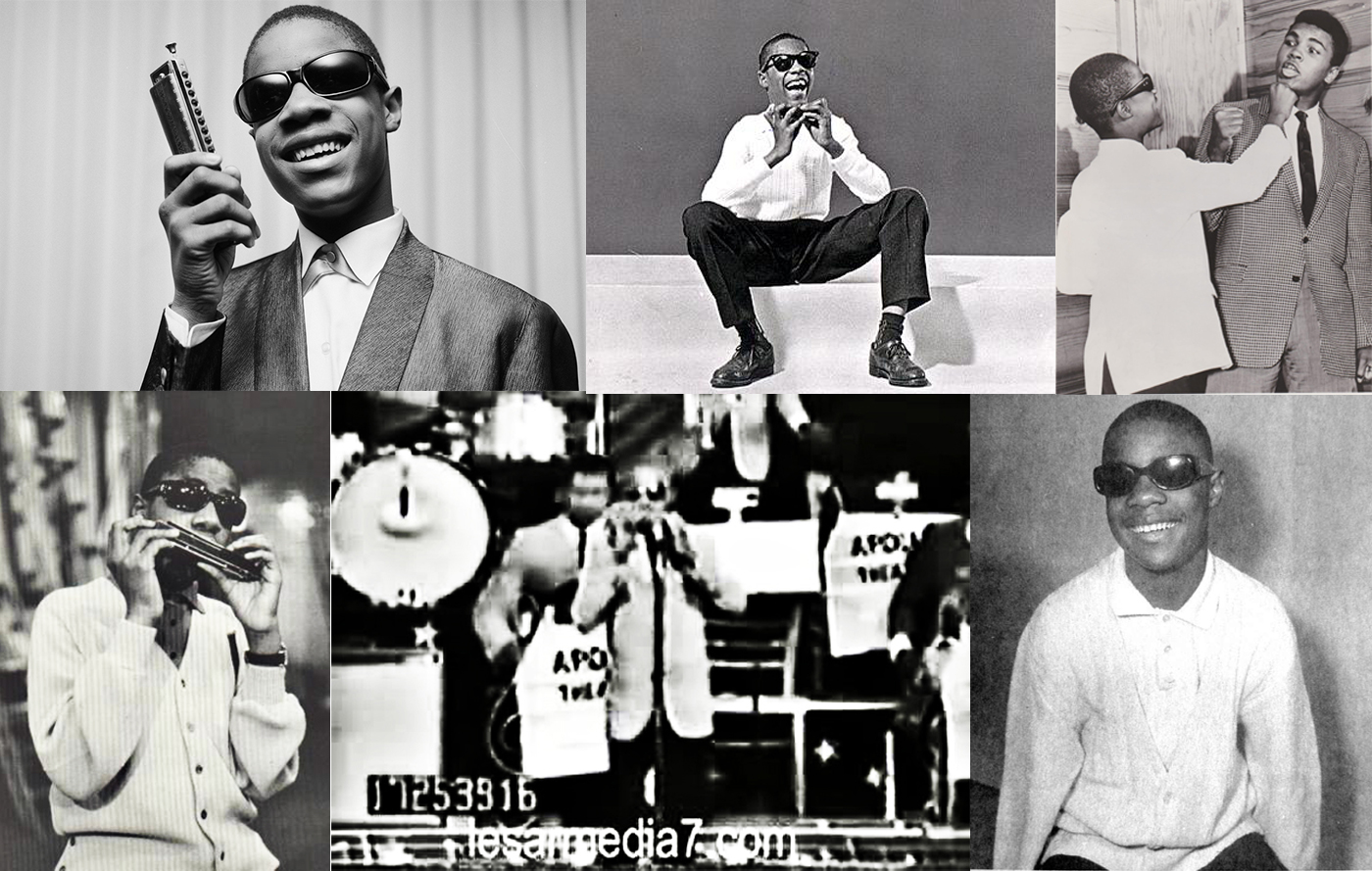
“Fingertips (Part 2)”  - Stevie Wonder
- Stevie Wonder
Album: The 12 Year Old Genius (Recorded Live)
Released 1963 
“Fingertips (Part 2)”  was the first live recording to hit #1 in the U.S., and it made Stevie Wonder the youngest artist ever to top the chart. The song has quite a story behind it. Wonder, just 12 years old, was part of a Motown package tour called “The Motortown Revue”, and was thrilling crowds with his high-energy performances.
was the first live recording to hit #1 in the U.S., and it made Stevie Wonder the youngest artist ever to top the chart. The song has quite a story behind it. Wonder, just 12 years old, was part of a Motown package tour called “The Motortown Revue”, and was thrilling crowds with his high-energy performances.
On March 10, 1963, the Revue came to the Regal Theatre in Chicago, where Wonder's performance was recorded. On this night, he played a highly improvised version of his song “Fingertips”, which went on for about 10 minutes as the crowd went absolutely nuts and the stage manager, concerned because the show was running late, tried to get him off so the next act could perform.
Wonder fed off the crowd and kept going, even doing a little bit of “Mary Had a Little Lamb” on his harmonica. When Wonder ends the song (about 2:05 in), the band starts to clear the stage, and the band for the next act, The Marvelettes, hustles on. At this point, Wonder starts playing again, at which point you can hear The Marvelettes bass player Joe Swift ask “What key?” and the performance picks up again with a little encore played by at least some members of the new band.
Motown released the last three minutes of this performance as
“Fingertips (Part 2)”, as the B-side of a different performance of the first part of “Fingertips”. Part 2 became the hit, and the single was quickly reissued with Part 2 as the A-side. The song went to #1 on August 10, 1963, when Wonder was 13. It spent three weeks at the top and launched him to stardom.
An instrumental studio version of “Fingertips” was inclua>'s first album, The Jazz Soul Of Little Stevie, in September 1962. The song was written by the Motown writers Hank Cosby and Clarence Paul. This version of the song is much more mellow, jazzier and flute-heavy than the famous live version, which plays up the horns and harmonica.
Wonder's first two albums were The Jazz Soul of Little Stevie and Tribute to Uncle Ray, both released in 1962 and intended to frame Stevie as a young Ray Charles. They didn't catch on, but in 1963 Motown released The 12 Year Old Genius (Recorded Live), with two sides of the “Fingertips” single (from different performances) edited together to make one song. The album hit #1 while the single was still topping the Hot 100, making Stevie Wonder the first artist with a #1 album and single at the same time. The song was also a #1 R&B hit at the time.
The words on this song were stuff Stevie Wonder came up with to engage the crowd - Part 1 of the song and the studio version are both instrumental.
This was only the second #1 hit for Motown Records. Their first was
“Please Mr. Postman”  by The Marvelettes in 1961
by The Marvelettes in 1961
A young Marvin Gaye played drums on this live recording. Gaye had already been a Motown session drummer for a couple of years, and amongst the hits he'd previously drummed on was The Marvelettes on Wonder #1 song
“Please Mr. Postman”  .
.
Berry Gordy gave Wonder the name “Little Stevie Wonder” (his real name is Steveland Morris) and marketed him with Motown Records as a “Genius”. His talent was obvious, but it didn't translate to record, and his first three singles tanked.
It took a while for Wonder to develop a studio hit, but he quickly became a top live performer, thanks in part to his time in the youth choir at Whitestone Baptist Church in Detroit.
“Fingertips (Part 2)”  captured that live energy and established Wonder as a top vocalist and harmonica player, but as he grew up, he developed into a brilliant songwriter, producer and multi-instrumentalist. He dropped the “little” from his stage name in 1964.
captured that live energy and established Wonder as a top vocalist and harmonica player, but as he grew up, he developed into a brilliant songwriter, producer and multi-instrumentalist. He dropped the “little” from his stage name in 1964.
Wonder got a lot of attention in the aftermath of this song, but he went though a long dry spell before he had another big hit. By 1965, Motown producers were passing up opportunities to work with him because they couldn't figure out how to translate his talent into a hit recording.
The breakthrough came when he began working with Sylvia Moy, who worked with him on the song
“Uptight (Everything's Alright)”  , which made #3 in 1966.
, which made #3 in 1966.
Continued ...
MORE SONGS
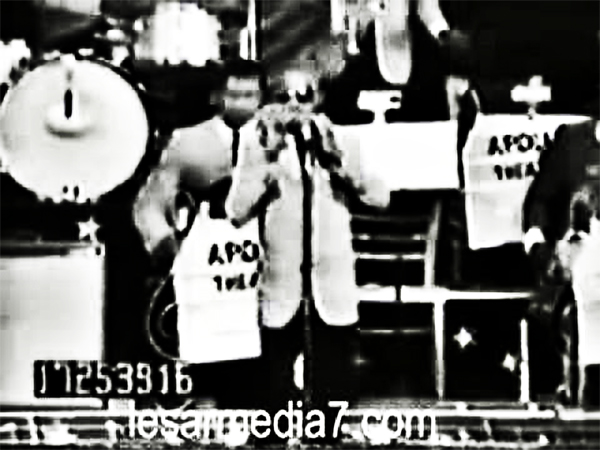
1962
“I Call It Pretty Music, But The Old People Call It The Blues (Part 1)”  Live
Live 
1963
“Fingertips (Part 2)”  Live
Live 
1965
“Uptight (Everything's Alright)”  Live
Live 
1966
“A Place In the Sun”  Live
Live 
1967
“I Was Made To Love Her”  Live
Live  Video
Video 
1968
“Alfie”  Live
Live  Video
Video 
“For Once In My Life”  Live
Live  Video
Video 
1969
“My Cherie Amour”  Live
Live  Video
Video 
“Yesterme Yesteryou Yesterday”  Live
Live  Video
Video 
1970
“Signed, Sealed, Delivered I'm Yours”  Live
Live  Video
Video 
“Never Had a Dream Come True”  Live
Live 
“Heaven Help Us All”  Live
Live 
1971
“We Can Work It Out”  Live
Live  Video
Video 
1972
“Superstition”  Live
Live  Video
Video 
“Superwoman (Where Were You When I Needed You) ”  Live
Live 
1973
“You Are The Sunshine Of My Life”  Live
Live  Video
Video 
“Higher Ground”  Live
Live  Video
Video 
“Living for the City”  Live
Live  Video
Video 
1974
“Don't You Worry 'Bout a Thing”  Live
Live  Video
Video 
“You Haven't Done Nothin'”  Live
Live  Video
Video 
“Boogie On Reggae Woman”  Live
Live  Video
Video 
1976
“Isn't She Lovely”  Live
Live  Video
Video 
1977
“I Wish”  Live
Live  Video
Video 
“Sir Duke”  Live
Live  Video
Video 
“As”  Live
Live  Video
Video 
1980
“Master Blaster (Jammin)”  Live
Live  Video
Video 
1981
“Lately”  Live
Live  Video
Video 
“Happy Birthday”  Live
Live 
1982
“Ebony and Ivory”  Live
Live  Video
Video 
“Do I Do”  Live
Live  Video
Video 
“Ribbon In The Sky”  Live
Live  Video
Video 
1984
“I Just Called To Say I Love You”  Live
Live  Video
Video 
1985
“Part Time Lover”  Live
Live  Video
Video 
1986
“Overjoyed”  Live
Live  Video
Video 
1995
“For Your Love”  Live
Live 
2016
“Faith”  Live
Live 
“Fingertips (Part 2)” - Stevie Wonder 1963 Continued ...
Stevie Wonder unofficial site (Stevie Wonder Discography) / Rock & Roll Hall of Fame / Billboard / All Music / Song Facts /
Ultimate Classic Rock / Stevie Wonder
Image: “ The 12 Year Old Genius (Recorded Live) (album)” by Stevie Wonder
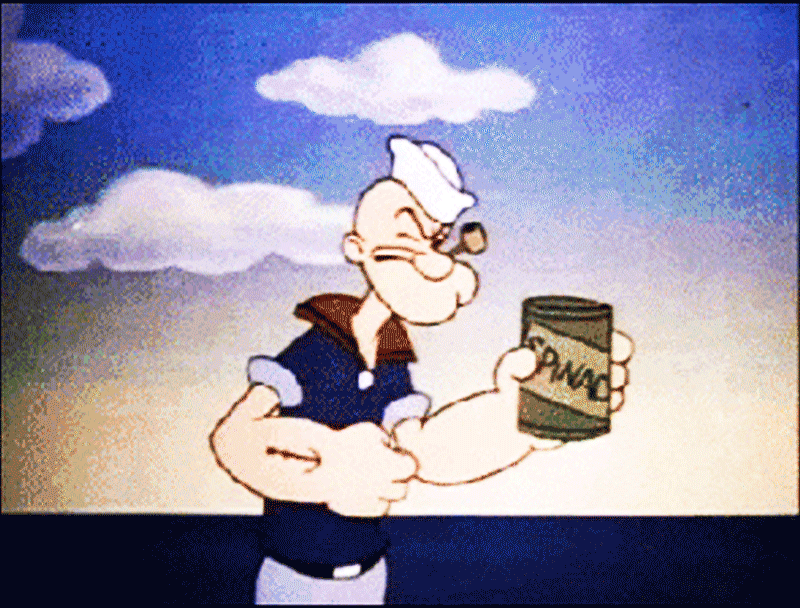
Trivia
● What is tattooed on Popeye’s arm?
Answer to Trivia
● The 13 stripes on the United States Flag represent what?
Answer to Trivia
● What “imaginary” number is defined as the square root of -1?
Answer to Trivia
● What snack gave Mickey Mouse his first spoken words?
Answer to Trivia

Joke of the Day

“Bunny Hopping Down The Bunny Trail”
One morning a blind bunny was hopping down the bunny trail, and he tripped over a large snake and fell, KerPlop!, right on his twitchy little nose.
“Oh, please excuse me!” said the bunny. “I didn't mean to trip over you, but I'm blind and can't see.”
“That's perfectly all right” replied the snake.
“To be sure, it was my fault.
I didn't mean to trip you, but I'm blind too, and I didn't see you coming.
By the way, what kind of animal are you?”
“Well, I really don't know”, said the bunny.
“I'm blind, and I've never seen myself.
Maybe you could examine me and find out.”
So the snake felt the bunny all over, and he said,
“Well, you're soft, and cuddly, and you have long silky ears, and a little fluffy tail and a dear twitchy little nose...
You must be a bunny rabbit!”
Then the bunny said, “I can't thank you enough, but by the way, what kind of animal are you?”
And the snake replied that he didn't know,
and the bunny agreed to examine him,
and when he was finished, the snake said, “Well, what kind of an animal am I?”
So the bunny felt the snake all over, and he replied,
“You're hard, you're cold, you're slimy and you haven't got any balls...
You must be a lawyer.”





























